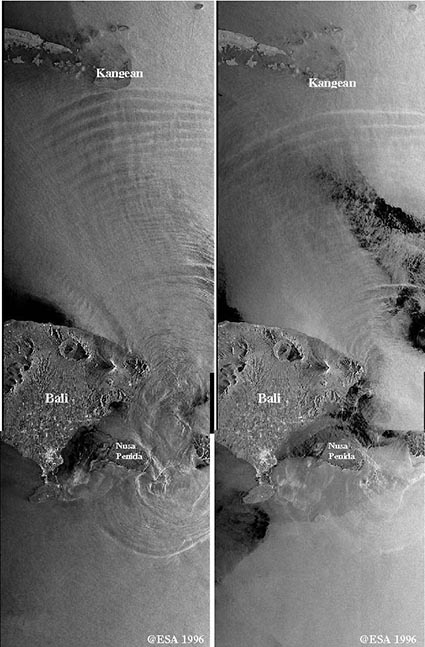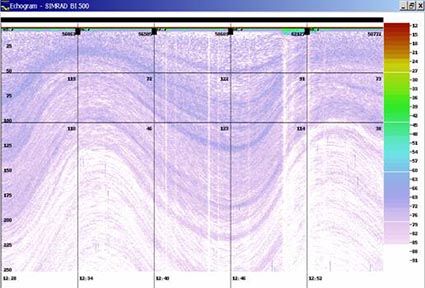INTERNAL WAVES IN THE INDONESIAN SEAS
SAR Images in the Lombok Strait

Figure 1. SAR images of the Lombok Strait taken at 02:32UTC on April 23, 1996 by ERS-1 (a) and on April 24, 1996 by ERS-2 (b). Packets of internal solitary waves propagating both northward and southward are clearly seen (circular bright/dark patterns) in both images. Images are copyright of the European Space Agency. (Susanto et al, 2005)
Research Supported by Office of Naval Research.
Observed Internal Waves
The Indonesian seas, with their complex coastline geometry and bathymetry, narrow passages, stratified waters, and strong tidal currents, are favorable places for the generation of intensive ocean internal waves. Internal waves, which occur within the subsurface layers of the ocean where the density stratification is strong, are generated when the interface between layers is disturbed. Disturbances are often caused by tidal flow passing over shallow underwater obstacles such as a sill or a shallow ridge. Internal waves are commonly observed in the Lombok Strait, one of the outflow straits of the Indonesian throughflow (ITF) , which transports water from the Pacific to the Indian Ocean.

Figure 2. A spectacular echogram of the water column obtained by an EK500 Echosounder operating at frequency of 38 kHz during the 2005 INSTANT Indonesian throughflow cruise. The echogram clearly shows the internal waves in the Lombok Strait. The ship was standby when waves with a wavelength of ~1.8 km passed under the ship with a speed of ~1.5m/s. The wave amplitude (peak to trough) exceeds 100 m. Higher backscatter values indicate higher plankton concentration or large schools of fish. Vertical axis is depth in meters. Horizontal axis is time. Colors represent relative backscatter strength in decibels. (Susanto et al, 2005).